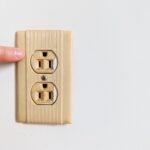Imagine stepping into a shower that maintains the perfect temperature and consistent water pressure every single time. Temperature fluctuations and unpredictable pressure are common problems, often caused by a faulty shower valve cartridge. Tackling this issue can improve your daily routine significantly, making a DIY shower valve cartridge replacement not just a necessity but a smart step towards enhancing your bathing experience.
- Learn what a shower valve cartridge is and why it’s key to consistent water flow and temperature.
- Discover the essential tools and materials you need before starting the replacement process.
- Follow an easy step-by-step guide to effectively replace your shower valve cartridge and restore perfect water balance.
Embark on this DIY journey to not only fix your shower issues but also gain valuable maintenance skills that prevent future inconveniences.
Understanding DIY Shower Valve Cartridge Replacement: Basics for Fixing Temperature and Pressure Issues
Before diving into the process of replacing a shower valve cartridge, it’s crucial to grasp the basics of what this component is and why it plays a vital role in maintaining balanced water temperature and pressure. The shower valve cartridge is a small yet significant part of your plumbing system.
Located within the shower valve, it controls the flow and mix of hot and cold water, allowing you to set the desired temperature and pressure. Over time, the cartridge may wear out or become clogged with mineral deposits, causing unpredictable temperature fluctuations and inconsistent water pressure.
Understanding its functionality enables you to diagnose issues effectively and undertake DIY replacements with confidence. Fixing these problems not only enhances your shower experience but also contributes to efficient water usage, promoting a more sustainable household.
Tools and Materials Required for Shower Valve Cartridge Replacement
Having the right tools and materials on hand is the foundation of any successful DIY shower valve cartridge replacement. This task doesn’t require an extensive toolkit, but ensuring you have a few specific items will simplify the process significantly.
Essential tools include:
- Adjustable Wrench: Ideal for loosening and tightening nuts and bolts without damaging plumbing fixtures.
- Screwdriver: Often needed to remove the faceplate and access the cartridge.
- Needle-Nose Pliers: Useful for gripping and pulling out the old cartridge.
- Cartridge Puller: A recommended tool that makes removing the cartridge much easier, especially if it’s tightly fitted or corroded.
Other materials you may need include:
- Replacement Cartridge: Ensure the new cartridge is compatible with your shower valve brand and model.
- Plumber’s Grease: Helps to lubricate and seal the new cartridge, reducing the chances of leaks.
By preparing these tools and materials beforehand, you streamline the replacement process and minimize the potential for unexpected interruptions, ensuring a smooth and efficient repair experience.
Step-by-Step Guide: DIY Shower Valve Cartridge Replacement to Fix Temperature and Pressure Issues
Replacing a shower valve cartridge can be a straightforward process that significantly improves your shower’s performance by ensuring consistent water temperature and pressure. Follow these steps carefully to achieve the best results.
Step 1: Turn Off Water Supply
Before beginning any work, it’s crucial to turn off the water supply to your shower. Locate the main water valve or the designated shower supply valve and switch it off. This prevents any unwanted water flow during the replacement process.
Step 2: Remove the Shower Handle
Using a screwdriver, carefully detach the shower handle from the valve. In most cases, you’ll find a small screw underneath a plastic cap or behind the handle. Keep these components in a safe place to avoid losing them.
Step 3: Detach the Escutcheon Plate
Next, remove the escutcheon plate, which is the decorative plate covering the wall. This task often requires unscrewing a few screws. Once removed, you should have a clear view of the valve assembly inside the wall.
Step 4: Extract the Old Cartridge
Carefully pull out the existing shower valve cartridge using pliers. If it seems stuck, you might need a cartridge puller tool, available at most home improvement stores. Take note of its orientation to install the new cartridge correctly.
Step 5: Install the New Cartridge
Take your new shower valve cartridge and insert it into the valve body, aligning it correctly as per your observations. Ensure that the cartridge is seated firmly to avoid future leaks.
Step 6: Reattach the Escutcheon Plate and Handle
Secure the escutcheon plate back onto the wall and reattach the shower handle using the screws you previously removed. This restores the complete assembly and prepares your shower for use.
Step 7: Turn the Water Supply Back On and Test
Finally, restore the water supply and test the shower. Check for proper water pressure and temperature balance. Ensuring no leaks around the newly installed cartridge confirms successful completion of the replacement.
By meticulously following these steps, you will address common shower issues, improving your bathroom experience significantly. Regular checks and timely replacements can prevent such problems from recurring.
Frequently Asked Questions About Shower Valve Cartridge Replacement
What is a shower valve cartridge?
A shower valve cartridge is a component that controls the flow and mix of hot and cold water in your shower, affecting both temperature and pressure.
How do I know if my shower valve cartridge needs replacing?
Signs include fluctuating water temperature, inconsistent pressure, and difficulties turning the handle.
Can I replace a shower valve cartridge myself?
Yes, with the right tools and guidance, DIY replacement is possible and can fix common issues.
What tools are needed for replacement?
You will need a screwdriver, adjustable wrench, and sometimes a cartridge puller, depending on your shower model.
How long does it take to replace a shower valve cartridge?
The process usually takes about 1 to 2 hours, depending on your skill level and shower type.
What should I do if the new cartridge doesn’t resolve the issue?
- Check installation for errors.
- Ensure no debris is blocking the water flow.
- If problems persist, consult a professional.





